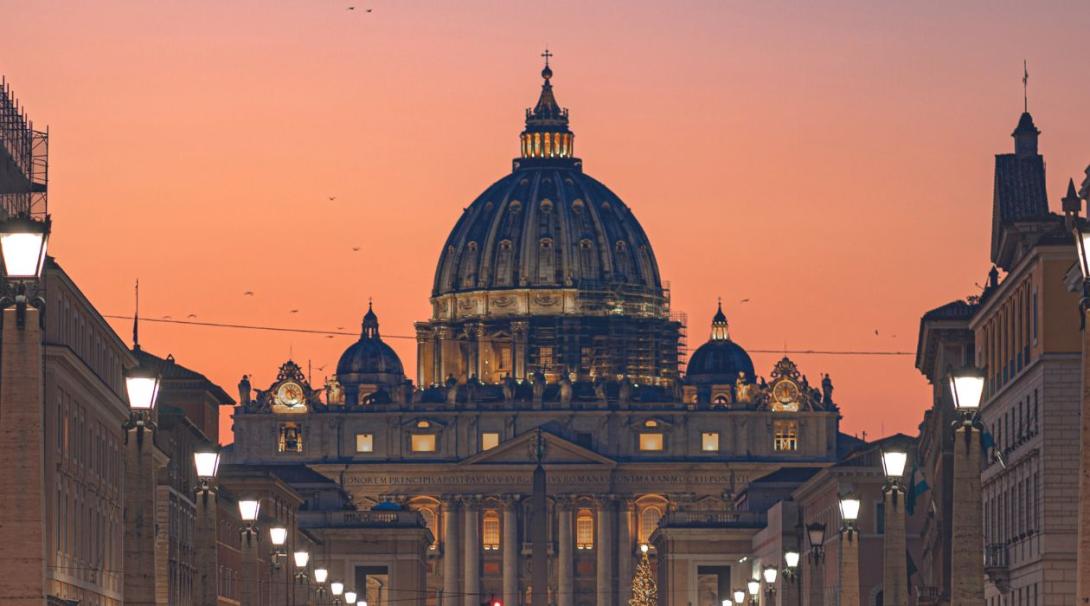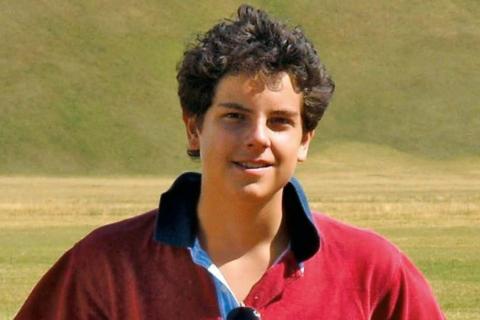
© Photo by Albernico Bartoccini | Unsplash
Could we start by you telling us what you’ve been seeing around the world as you travel with Pope Francis? What does synodality look like in places where you have been?
It’s clear from here in Rome to places the Pope has traveled recently (as diverse as the Democratic Republic of Congo and South Sudan to Canada and Kazakhstan) that synodality is very much on the mind and agenda of Francis. His speeches are infused with references to it and when you talk to leaders of local churches, they quickly cite their engagement in the synodal process. I was struck by a conversation with a bishop in war-torn South Sudan who talked about despite having serious challenges that most westerners can’t imagine—from lack of internet to safety concerns about traveling inside one’s city—that synodality had been helpful in reconciling tribal and ethnic divisions in his diocese. Or last summer, when I was in Kenya, I was told that some 5 million people—Catholics, other Christians and non-Christians—had participated in synod listening sessions. The enthusiasm is palpable and, most importantly, they see it as a new way of being church and they don’t expect it to be rolled back.
Why do you think there has been so little synodality in North America compared to the rest of the world?
The U.S. is a mixed bag: There are real pockets of energy when it comes to the synod process. I was in Detroit in March and was very impressed at how despite there not being an archdiocesan-wide synod process, how many lay people had found avenues to participate elsewhere. I also think of lay led groups like Discerning Deacons that held over 350 synod consultations trying to provide a synodal home for those that have not had outlets to participate in the synod. But there is also resistance to it that I believe mirrors the divisions in the U.S. hierarchy over Pope Francis.
Explain what is going to take place in Rome in October at the 16th Ordinary General Assembly of the Synod of Bishops.
Approximately 300 representatives from around the world—a majority of whom will be bishops but also lay people—will gather in Rome for the month to discuss what it means to be a more synodal Church—effectively asking the question how the Church can listen to all of its members and better invite them to participate in the life of the Church. This is the first of two meetings (the second will take place in October 2024) and Vatican officials have emphasized that this October’s meeting will not focus so much on specific hot button issues (such as the role of women, LGBTQ relationships, etc.) but rather, the processes themselves, including the question of what issues can be decided at a local level versus what should be reserved for the Vatican. For the first time in history, women and other lay leaders will have a right to vote at the synod, making it not just a synod of bishops but a process where all participants can not only listen, but vote on the proposals that emerge.
This year, on June 20, you reported on a document produced by the Vatican’s synod office, asking all who attend to do what?
The sixty-page report is unique as far as Vatican documents go. It’s not a strictly theological text, but rather a guide for reflection—both individually and collectively. There are three interwoven themes: communion, mission and participation, and the document asks those participating in the synod process (both in Rome and in churches around the globe) to discern how the Church may become more synodal with those themes in mind.
Then, the document poses a series of questions—more than 100 of them—to help guide the discernment. These questions tackle a range of issues: the role of women, welcoming LGBTQ+ Catholics, the disabled, those suffering from abuse, the poor, migrants, and so on. The central question, the document states, is to consider how church structures and ministries can become more welcoming for all.
Was the June 20 document itself a result of the synodality process?
Absolutely. It was the result of a nearly three-year process that began by engaging Catholics from all over the world via listening sessions (both in person and virtually). That stage was followed-up with seven continental assemblies that further considered the hopes, dreams, and fears of Catholics from around the world and are now represented in this working document that will guide the discussions for meetings here in Rome this coming October and in October 2024. If synodality means walking together, I’d say that’s quite the journey!
Is there anything that ordinary Catholics in North America might do to promote synodality?
As a reporter, I often remark that it’s not my job to figure out how to solve the problems but just to chronicle them accurately! That being said, lay Catholics eager to participate in the synod process have every right to remind their pastor or bishops that synodality is one of the top priorities of Pope Francis and to ask how that’s being implemented on a local level. Also, the Vatican’s own Synod Resources website is quite comprehensive: www.synodresources.org.












